Today, transport is more than getting from one place to another. With so many options and a variety of carriers, both private and public, the game has changed. People travel frequently and have the chance to experience different types of transport in various countries. The old methods don't work anymore if you want to stay competitive. Now, it's all about making the journey enjoyable and hassle-free.
In this article, we delve into the hurdles of providing top-notch CX in transportation, methods to measure it, and explore creative solutions to enhance it, all illustrated with practical examples from the field.
Contents
What is customer experience in the transportation industry?
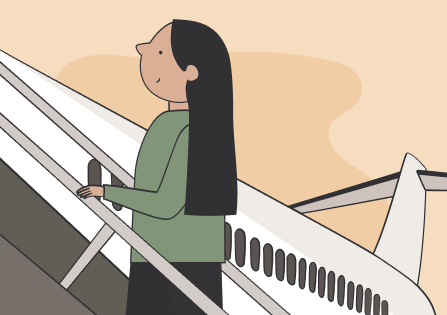
When it comes to transportation, customer experience stands for the overall satisfaction and perception passengers have when interacting with this or that kind of transportation: public transport like buses, trains, and subways, or private and shared transportation services such as ride-sharing, car rentals, aviation, and even personal vehicles.
Customer experience in the transportation industry encompasses everything a customer goes through, from the initial contact to the actual travel and any post-journey services. For instance:
- For trains and flights, it would be booking tickets, checking in, boarding, the journey itself, and any follow-up services like feedback surveys or customer support.
- For city buses, it would involve waiting at the stop, the boarding process, the ride, and interactions with the driver or service updates through apps.
- For car-sharing services, it’s finding and reserving a vehicle, the ride, the drop-off process, and any post-ride interactions or billing issues.
- For ride-sharing services, this includes booking a ride through an app, waiting for the driver, the journey with other passengers, and rating the experience afterward.
Each of these experiences involves different touchpoints and can significantly affect overall customer satisfaction.
Factors influencing transportation CX
So, what are the factors ultimately affecting CX in transportation? Let’s see some examples.
- Technology
Digital solutions like mobile apps, real-time tracking, and online booking systems enhance convenience and satisfaction.
For example, would you prefer standing at a bus stop, unsure when the next bus will arrive, or using an app to track its exact location and arrival time? These technologies make the experience much more convenient and stress-free for passengers.
- Service quality
Consistent and reliable services are critical. For example, imagine you're relying on a train to get to an important meeting. If the train is delayed, canceled, or poorly maintained, it can cause significant stress and inconvenience, potentially causing you to be late.
On the other hand, a reliable service that consistently runs on time ensures you reach your destination smoothly, greatly enhancing your overall experience and trust in the service.
- Employee interaction
Friendly and helpful staff, whether drivers, customer service representatives, or station personnel, play a crucial role. If you have questions about your journey and the staff responds promptly and kindly, your experience will be much more pleasant.
Conversely, if the staff is rude or unhelpful, it can make a smooth journey frustrating. Positive interactions with employees can significantly enhance your overall satisfaction and encourage you to use the service again.
Impact on business
The quality of customer experience directly impacts business outcomes in different ways:
Satisfied customers are more likely to use the service again and recommend it to others.
- Revenue growth
Positive experiences can drive increased usage and attract new customers. When customers have a great experience, they are more likely to use the service again and recommend it to others, leading to more frequent usage and attracting new customers.
Word-of-mouth and positive reviews can significantly boost brand reputation, drawing in new users and expanding the customer base. This increased demand naturally leads to higher revenue.
- Brand reputation
A good customer experience enhances the company's reputation, differentiating it from competitors. By focusing on improving the moments of truth, the company can build a strong brand image that customers trust and rely on.
- Operational efficiency
Efficient processes reduce delays and errors, saving time and resources. Happy customers are more likely to use the service again and recommend it to others, increasing revenue. Additionally, fewer complaints and issues mean less time spent on customer service, further reducing costs.
Common challenges of CX in transport

No system is without its challenges; customer experience in the transportation industry is no exception. To effectively address and resolve issues there, it's crucial first to identify and understand where they arise.
Here are some common challenges in transportation customer experience:
- Unpredictable delays
Example: A commuter train frequently arrives late due to track maintenance or unforeseen technical issues, causing passengers to miss appointments.
- Lack of real-time information
Example: A train service does not provide real-time departure and arrival updates. Passengers at the station are left in the dark about delays or platform changes, causing confusion as they struggle to find accurate information about their journey.
- Poor service quality
Example: An airline with inconsistent in-flight service experiences. Sometimes, flights are delayed without proper communication, and on other occasions, the cabin crew might be less attentive, affecting overall passenger satisfaction.
- Inadequate infrastructure
Example: An airport with outdated facilities that struggles to handle peak travel times. Long security lines, insufficient seating, and limited amenities can leave travelers stressed and unhappy.
- Unfriendly staff
Example: A car rental company where staff members are not properly trained in customer service, leading to negative interactions that taint the customer’s overall experience.
- Complex booking processes
Example: A ferry service with a cumbersome online booking system that is difficult to navigate, resulting in booking errors and frustrated customers.
- Poor maintenance and cleanliness
Example: A city bus that is often dirty, with broken seats and malfunctioning air conditioning, making rides uncomfortable and unpleasant for passengers.
- Limited accessibility
Example: A train station that lacks proper facilities for individuals with disabilities, such as ramps and elevators, making it challenging for some passengers to use the service.
- Overcrowding
Example: A metro service during rush hours when trains are packed beyond capacity, leading to an uncomfortable and potentially unsafe environment for passengers.
- Inconsistent service
Example: A ride-sharing service that varies greatly in quality depending on the driver, leading to an unpredictable user experience.
- Unjustifiably high costs
Example: An intercity bus service that has recently increased its fares without improving service quality, making passengers feel they are not getting value for their money.
- Security concerns
Example: A poorly lit parking garage at a suburban train station where passengers feel unsafe, particularly at night, deterring them from using the service.
These examples illustrate the range of challenges the transportation industry faces in delivering a positive customer experience. Addressing these issues can significantly improve customer satisfaction and loyalty.
How to measure transportation customer experience
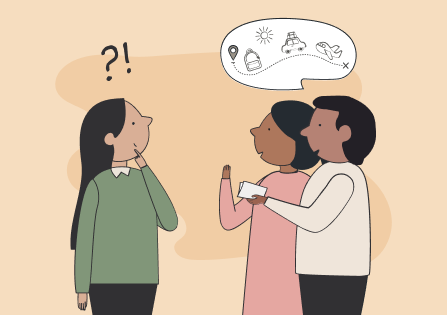
Measuring customer experience in the transportation industry means using different metrics and tools to understand how passengers feel about and interact with the services. Here are some effective ways to measure transportation customer experience:
1. Net Promoter Score (NPS)
- What it measures: Customer loyalty and likelihood to recommend the service.
- How to implement: Ask passengers how likely they are to recommend your service on a scale from 0 to 10. Subtract the percentage of detractors (0-6) from the percentage of promoters (9-10).
2. Customer Satisfaction Score (CSAT)
- What it measures: Overall satisfaction with a specific service or experience.
- How to implement: After a trip, ask passengers to rate their satisfaction on a scale from 1 to 5. Calculate the percentage of satisfied customers (4 and 5 ratings).
3. Customer Effort Score (CES)
- What it measures: The ease of using the service.
- How to implement: Survey passengers on how much effort they had to put into using your service on a scale from 1 to 7. Lower scores indicate a better experience.
4. Real-time feedback
- What it measures: Immediate responses to current services.
- How to implement: Use digital platforms or mobile apps to gather feedback during or immediately after the trip. Implement touchpoints at various stages, such as booking, boarding, and arrival.
5. Service quality surveys
- What it measures: Detailed feedback on specific aspects of the service.
- How to implement: Conduct periodic surveys that cover various dimensions such as cleanliness, punctuality, staff behavior, and comfort.
6. Social media monitoring
- What it measures: Customer sentiment and engagement.
- How to implement Track mentions, comments, and reviews on social media platforms to gauge public perception and identify trends.
7. Customer journey mapping
- What it measures: Overall customer experience throughout different touchpoints.
- How to implement: Map out the entire journey from booking to post-trip to identify pain points and areas for improvement.
8. Mystery shopping
- What it measures: Service quality and customer interaction from a first-hand perspective.
- How to implement: Employ mystery shoppers to use your services and report back on their experience.
9. Usage data analysis
- What it measures: Patterns and behaviors in service usage.
- How to implement: Analyze data from ticket sales, check-ins, and usage logs to understand customer behaviors and preferences.
10. Complaint and inquiry analysis
- What it measures: Issues and areas needing attention.
- How to implement: Regularly review and categorize customer complaints and inquiries to identify common issues and areas for improvement.
Implementing CX metrics
To effectively implement these metrics, consider the following steps:
- Data collection: Use surveys, feedback forms, social media tools, and data analytics to gather information.
- Data analysis: Employ statistical tools and software to analyze the data collected.
- Actionable insights: Translate data insights into actionable improvements.
- Continuous monitoring: Regularly monitor and adjust your strategies based on ongoing feedback and changes in customer behavior.
By combining these methods, transportation companies can gain a comprehensive understanding of their customer experience, identify pain points, and continuously improve their services to meet and exceed customer expectations.
How can we improve CX in transportation?
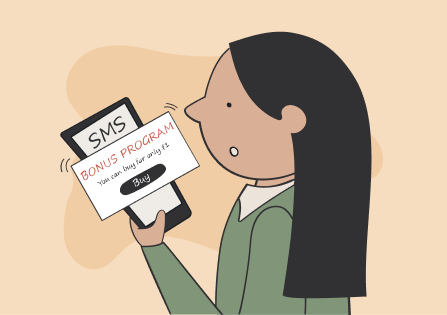
Identifying problems is just the first step; the real challenge lies in solving them.
In the transportation industry, improving customer experience requires a strategic approach and practical solutions. There are companies that have successfully implemented these strategies, so you can learn from their experiences and apply similar tactics to your own operations.
- Enhance digital experience
Singapore Airlines enhances its digital experience by providing a seamless booking process, mobile check-in, and personalized in-flight entertainment through its app. Passengers can easily manage bookings, access boarding passes, and receive real-time flight updates efficiently.
- Personalize customer interactions
Delta Air Lines uses a system called "Delta Pulse" to gather real-time feedback and data from customers, enabling them to personalize interactions effectively. This includes offering preferred seat selections and tailored in-flight services.
- Improve accessibility
Transport for London has introduced step-free access at many tube stations and provides detailed accessibility information through their website and apps. They also offer travel mentoring services to assist disabled passengers.
- Invest in staff training
Emirates prioritizes extensive staff training to ensure high-quality customer service, focusing on cultural sensitivity, problem-solving, and communication skills, resulting in exceptional service for passengers from diverse backgrounds.
- Utilize customer feedback
Uber uses a robust rating system to gather feedback from both passengers and drivers. This data helps reward high-performing drivers and identify areas for improvement, leading to features like "Quiet Mode" and "Preferred Temperature."
- Streamline operations
Japan Railways is renowned for its operational excellence, using advanced technology and strict maintenance schedules to ensure trains run on time, providing a reliable experience for passengers.
- Enhance in-transit experience
Qatar Airways enhances the in-transit experience with luxury lounges, superior in-flight entertainment, gourmet meals, and amenities like noise-canceling headphones and Wi-Fi.

- Focus on safety and cleanliness
Singapore MRT emphasizes safety and cleanliness through regular cleaning and contactless payment systems. Safety announcements and visual aids help ensure passenger awareness.
- Integrate seamless multimodal transport options
Berlin's BVG offers a single ticket for buses, trams, trains, and ferries, and a comprehensive app to help passengers plan their journeys and track real-time arrivals.
- Provide real-time information
New York City’s MTA has digital displays in subway stations and buses providing real-time information, along with a mobile app offering service alerts and alternative route suggestions.
Wrapping up
So, it's evident that providing a stellar customer experience in the transportation industry is not just a luxury but a necessity. The impact of a positive transportation customer experience goes beyond customer satisfaction; it directly influences customer loyalty, revenue growth, and brand reputation.
Whether it's public transport, ride-sharing services, or aviation, ensuring that each passenger's journey is smooth and enjoyable can set a company apart from its competitors.
Addressing the common challenges and implementing effective strategies such as enhancing digital experiences, personalizing interactions, improving accessibility, and utilizing real-time feedback can significantly elevate the customer experience in transport.
By learning from successful examples within the industry, transportation companies can adapt and innovate, ultimately leading to better operational efficiency and customer loyalty. The key to success lies in continually evolving and placing the customer at the heart of all service improvements.

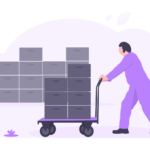
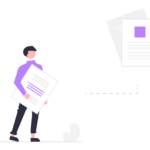



Really enjoyed this deep dive into CX in the transportation industry the emphasis on understanding passenger needs, reducing friction in every touchpoint, and using data to personalize experiences is incredibly relevant in today’s competitive mobility landscape. Improving customer experience not only boosts satisfaction but also builds long-term loyalty and trust.